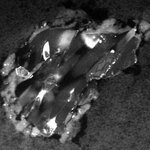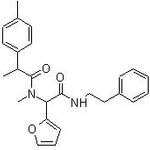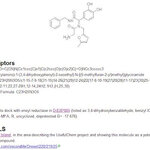Chemistry

I have previously commented on how organic chemistry can be incorporated into Second Life.
Andrew Lang has created a script to generate 3D structures of molecules and shown how to represent the docking of a molecule in the receptor site of a protein (this is important for demonstrating how drugs can interfere with infectious agents like the parasite that causes malaria).
I have also described how these molecules can be indexed by common search engines, like Google, so that people can discover locations in Second Life where I have previously commented on how organic chemistry can be…

Picture a cool place, teeming with a multitude of hot bodies twirling about in rapidly changing formations of singles and couples, partners and groups, constantly dissolving and reforming.
That's a good description of the shells around dying stars, the place where newly formed elements make compounds and life takes off, said Katharina Lodders, Ph.D., research associate professor of earth and planetary sciences in Arts & Sciences at Washington University in St. Louis.
“The circumstellar environment is where chemistry happens for the very first time,” said Lodders. “It's the first place a…

Researchers at the University of Warwick's Department of Chemistry have found a way of replacing the soap used to stabilize latex emulsion paints with nanotech sized clay armour that can create a much more hard wearing and fire resistant paint.
To date latex emulsion paints have relied on the addition of soaps or similar materials to overcome the polymer parts of the paint's aversion to water, stabilize the paint, and make it work. The University of Warwick chemistry researchers led by Dr Stefan Bon have found a simple way to individually coat the polymer particles used in such paints with a…

Want to make the perfect bandage? Mix the adhesive properties of the Mussel and the Gecko.
Scientists report they have merged two of nature’s most elegant strategies for wet and dry adhesion to produce a synthetic material that one day could lead to more durable and longer-lasting bandages, patches, and surgical materials.
The scientists, supported by the National Institute of Dental and Craniofacial Research (NIDCR), part of the National Institutes of Health, have designed a synthetic material that starts with the dry adhesive properties of the gecko lizard and supplements it with the…

This post provides an update of our CombiUgi project. From a larger perspective I think that this can be useful to people interested in how collaborative Open Science actually works.
For those who have not been following the progress of the CombiUgi project on our mailing list, here is a brief update.
The basic idea is to generate libraries of compounds that can be made quickly in the lab. The compounds in these virtual libraries are then prioritized according to potential usefulness (anti-malaria, anti-tumor, etc.). The top hits are then synthesized and tested.
We chose the Ugi reaction…

A detailed understanding of key chemical reactions that take place in interstellar space has been provided by groundbreaking research at two U.S. Department of Energy national laboratories and two European universities.
Argonne National Laboratory senior chemist Stephen Klippenstein – along with colleagues at Sandia National Laboratories; the Institute of Physics, University of Rennes, France; and the University of Cambridge, U.K. – has developed a detailed understanding of the dynamics of reactions between neutral radicals and neutral molecules, known as “neutral-neutral” reactions, at…

As I've recently commented, there has been media interest in the use of the virtual online world Second Life for chemistry. We also recently demonstrated on Drexel Island that it was possible to visualize molecular docking using the molecular rezzer developed by Andrew Lang.
Nature Island also hosts several common molecules, including buckyballs. As more people start to experiment with representing chemicals and chemistry research in Second Life it would be nice if such examples were discovered by a simple Google search.
All that really needs to be done to accomplish this is to co-locate…

Chemists from UCLA and the University of Florence in Italy may have solved an important mystery about a protein that plays a key role in a particular form of amyotrophic lateral sclerosis (ALS), also known as Lou Gehrig’s disease, a progressive, fatal neurodegenerative disorder that strikes without warning.
Joan Selverstone Valentine, UCLA professor of chemistry and biochemistry, has studied the protein — copper-zinc superoxide dismutase — since the 1970s, long before it was implicated in ALS in 1993. Since the link was discovered, Valentine’s laboratory has made more than two dozen mutant,…

Any machinist will tell you that a little grease goes a long way toward making a tool work better. And that may soon hold true for plastic electronics as well.
Carnegie Mellon University chemists have found that grease can make some innovative plastics vastly better electrical conductors. They outline a chemical process that could become widely adopted to produce the next generation of tiny switches for transistors in radio frequency identification tags, flexible screen displays, and debit or key cards.
“This research brings us closer to developing organic semiconductors with electrical…

Rich Apodaca wrote about using his InChIMatic service to track molecules in UsefulChem.
Because we use InChIs in blog posts and HTML pages generated automatically from the molecules blog, doing an InChI search in Google is a pretty good way to find molecules of interest to UsefulChem. However, Rich makes the valid point that these pages do not always point to the experiments where they are used.
I was aware of the limitations of using a blog to track molecules when I set it up. Because we were limiting ourselves to a few hundred molecules, the blog served its purpose much as I expected it…